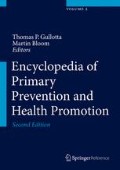Access this chapter
Tax calculation will be finalised at checkout
Purchases are for personal use only
References
Armstrong, H. (2008). Rebuilding lives: An introduction to promising practices in the rehabilitation of freed slaves. Washington, DC: Free the Slaves.
Bales, K. (1999). Disposable people. Berkeley, CA: University of California Press.
Bales, K. (2005). Understanding global slavery. Berkeley, CA: University of California Press.
Bales, K. (2007). Ending slavery:How we free today’s slaves. Berkeley, CA: University of California Press.
Bales, K., & Sodalter, R. (2009). The slave next door: Human trafficking and slavery in America today. Berkeley, CA: University of California Press.
Baumann, G. (2008). Measuring the effectiveness of anti-slavery work. Unpublished document. Free the Slaves.
Belser, P., & Andrees, B. (Eds.). (2009). Forced labor: Coercion and exploitation in the private economy. Boulder, CO: Lynn Reiner.
Bramon, B. (undated draft). Sustained liberation: Characteristics of successful community vigilance committees working against human trafficking and slavery in Northern India. Washington, DC: Free the Slaves.
Clark, M. (2008). Vulnerability, prevention and human trafficking: The need for a new paradigm. In An Introduction to human trafficking: Vulnerability, impact and action (pp. 59–67). New York: UN Office on Drugs and Crime, UN Global Initiative to Fight Human Trafficking (UN.GIFT).
Code of Conduct. (2012). The protection of children from sexual exploitation in travel and tourism. Retrieved May 25, 2012, from http://www.thecode.org
DC Velocity. (2011). California law requires disclosures about supply chain labor, September 23, 2011. Retrieved May 24, 2012 from http://www.dcvelocity.com/articles/20110923_california_law_requires_disclosures/
Dottridge, M. (2007). A handbook on planning projects to prevent child trafficking. Lausanne, Switzerland: Terre des Hommes.
Dottridge, M. (2008). Vulnerability, prevention and human trafficking: The need for a new paradigm. In An Introduction to human trafficking: Vulnerability, impact and action (pp. 115–120). New York: UN Office on Drugs and Crime, UN Global Initiative to Fight Human Trafficking (UN.GIFT).
ECPAT. (2011). Combating child sex tourism. Retrieved October 20, 2011, from http://www.ecpat.net/eng/Ecpat_inter/project/sex_touristm/sex_tourism.asp
Free the Slaves. (2012). Our work: Frontline partners. Retrieved May 25,2012 from www.freetheslaves.net
Hawken, P. (2007). Blessed unrest. London: Penguin.
Hyde, J., Bales, K., & Levin, M. (2006). Physical and mental health aspects of rehabilitating children freed from slavery. In Linking theory and practice to eliminate the worst forms of child labor. Washington, DC: US Department of Labor, Bureau of International Affairs.
International Labour Organization (ILO). (undated report). Information is protection: Travel smart-work smart initiative for migrants in the Mekong sub-region. In Meeting the challenge: Proven practices for human trafficking prevention in the greater Mekong sub-region. Geneva, Switzerland: International Labour Organization.
International Labour Conference (ILO). (2009). The cost of coercion: Global report under the follow-up to the ILO declaration on fundamental principles and rights at work. Geneva, Switzerland: International Labour Organization.
International Labour Organization (ILO). (2010). report 1-B. Accelerating action against child labour. Geneva, Switzerland: International Labour Organization.
Konwar, L. (undated). Using folk media to prevent human trafficking: A case study in tea gardens of North-East India. Assam, India: Promotion and Advancement of Justice, Harmony and Rights of Adivasis (PAJHRA).
Lize, S. (2005). Executive summary. In Recovering childhoods: Combating child trafficking in Northern India. Washington, DC: Free the Slaves.
Skinner, B. (2008). A crime so monstrous: Face to face with modern day slavery. New York: Simon & Shuster.
Tiny Hands International. (2011). Border monitoring. Retrieved on October 20, 2011 from, http://www.tinyhandsinternational.org/human-trafficking/border-monitoring
United Nations General Assembly. (2000). Protocol to prevent, suppress, and punish trafficking in persons. Palermo, Italy: United Nations.
United Nations General Assembly Report of the Secretary General. (2010). Trafficking in women and girls. A/65/209. New York: United Nations.
United Nations Office on Drugs & Crime. (2006). Toolkit to combat trafficking in persons (pp. 167–189). Vienna: United Nations.
United Nations Secretary-General’s Study. (2006). Violence against children. New York: World Health Organization.
U.S. AID. (2008). Best practices for programming to protect and assist victims of trafficking in Europe and Eurasia. Washington, DC: A report by Ruth Rosenberg for the U.S. Agency for International Development.
U.S. Department of State. (2010). Trafficking in persons report. Washington, DC: Office of the Under Secretary for Democracy and Global Affairs.
U.S. Department of State. (2011). Trafficking in persons report. Washington, DC: Government Printing Office.
U.S. Government Accountability Office. (2007). GAO report. Gao-07-1034. Washington, DC.
Wessells, M. (2009). Executive summary. In What are we learning about protecting children in the community?: An inter-agency review of evidence on community-based child protection mechanisms. London, UK: Save the Children
World Vision. (2011). Building a better world for children. Retrieved on October 20, 2011, from http://www.worldvision.org
Author information
Authors and Affiliations
Corresponding author
Editor information
Editors and Affiliations
Rights and permissions
Copyright information
© 2014 Springer Science+Business Media New York
About this entry
Cite this entry
Hyde, J. (2014). Slavery Prevention in the Contemporary World. In: Gullotta, T.P., Bloom, M. (eds) Encyclopedia of Primary Prevention and Health Promotion. Springer, Boston, MA. https://doi.org/10.1007/978-1-4614-5999-6_313
Download citation
DOI: https://doi.org/10.1007/978-1-4614-5999-6_313
Published:
Publisher Name: Springer, Boston, MA
Print ISBN: 978-1-4614-5998-9
Online ISBN: 978-1-4614-5999-6
eBook Packages: MedicineReference Module Medicine

